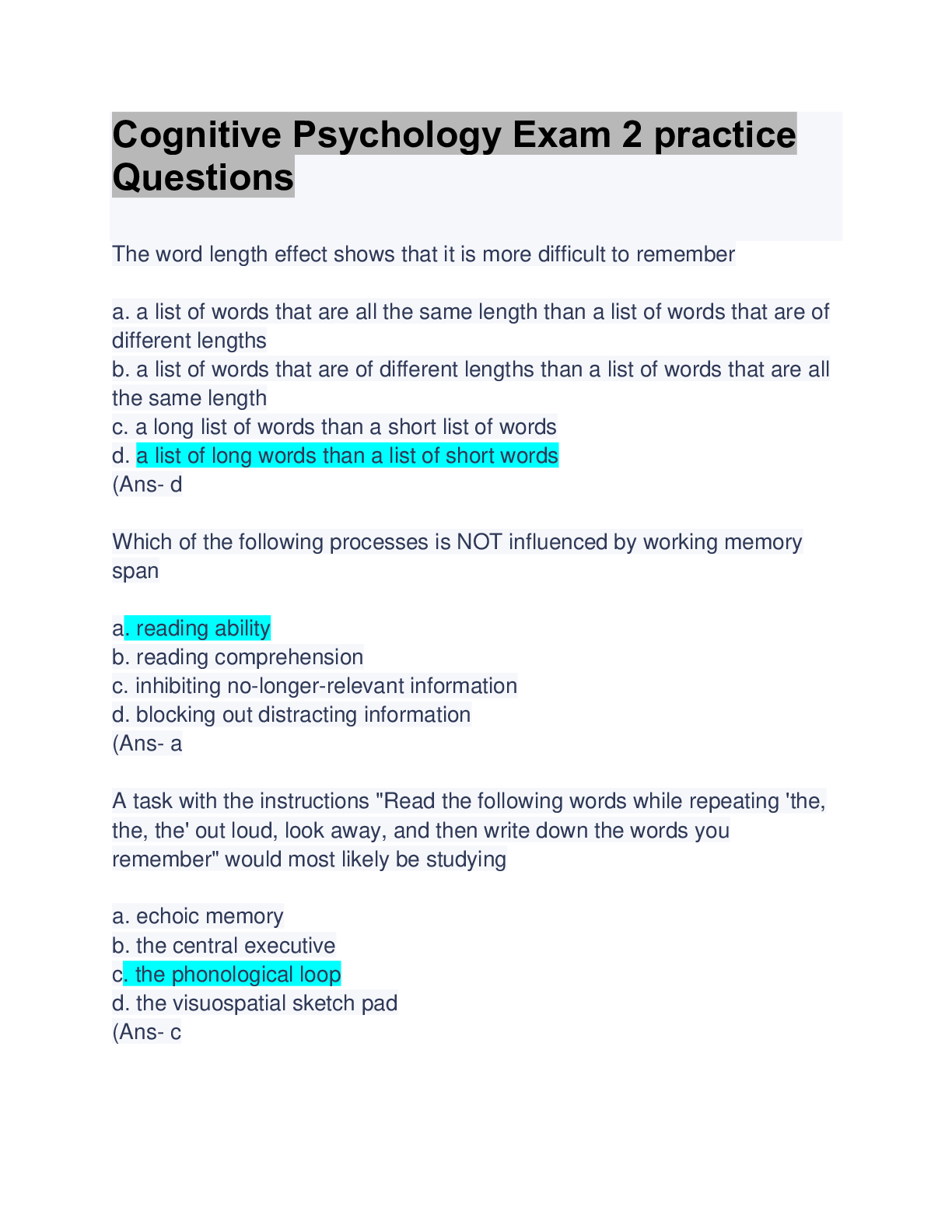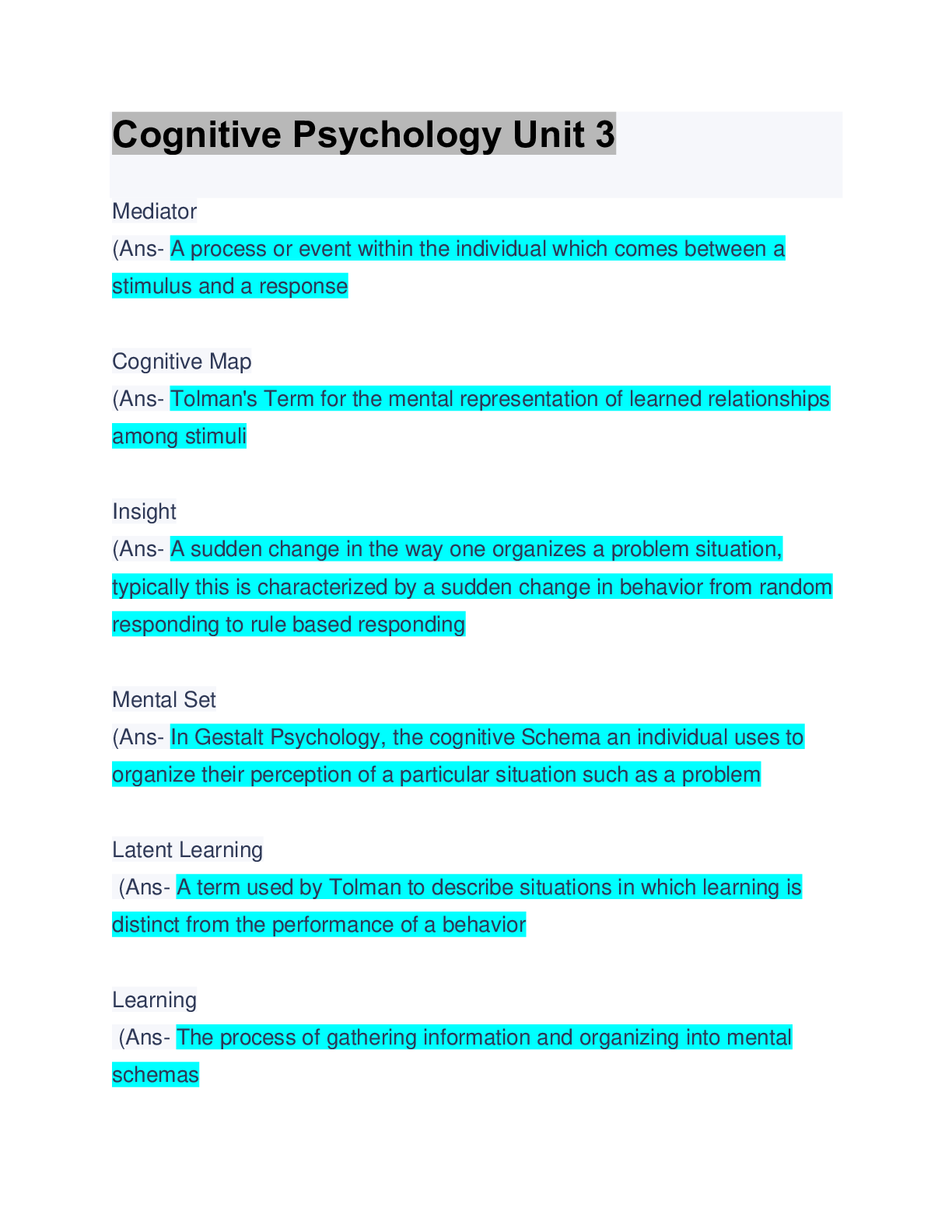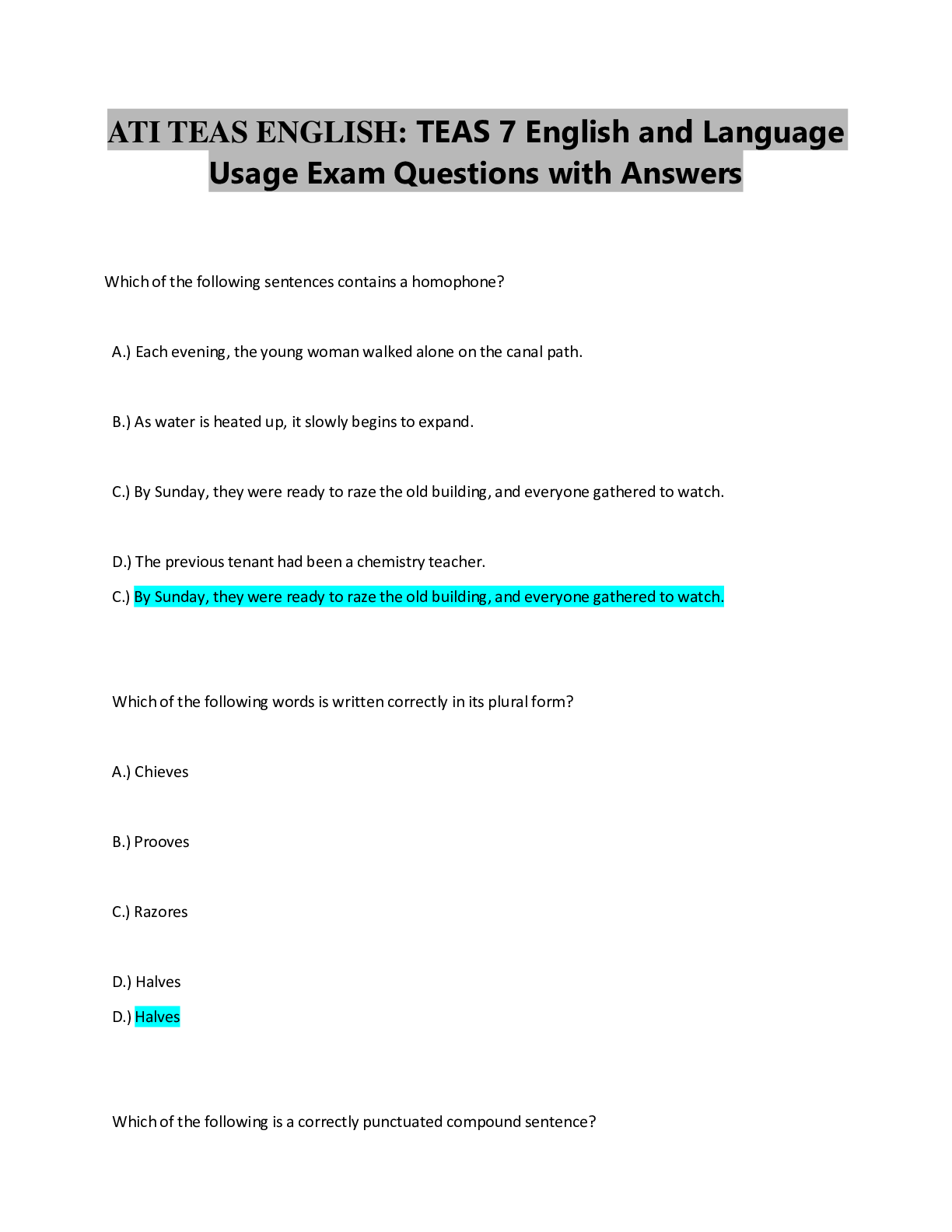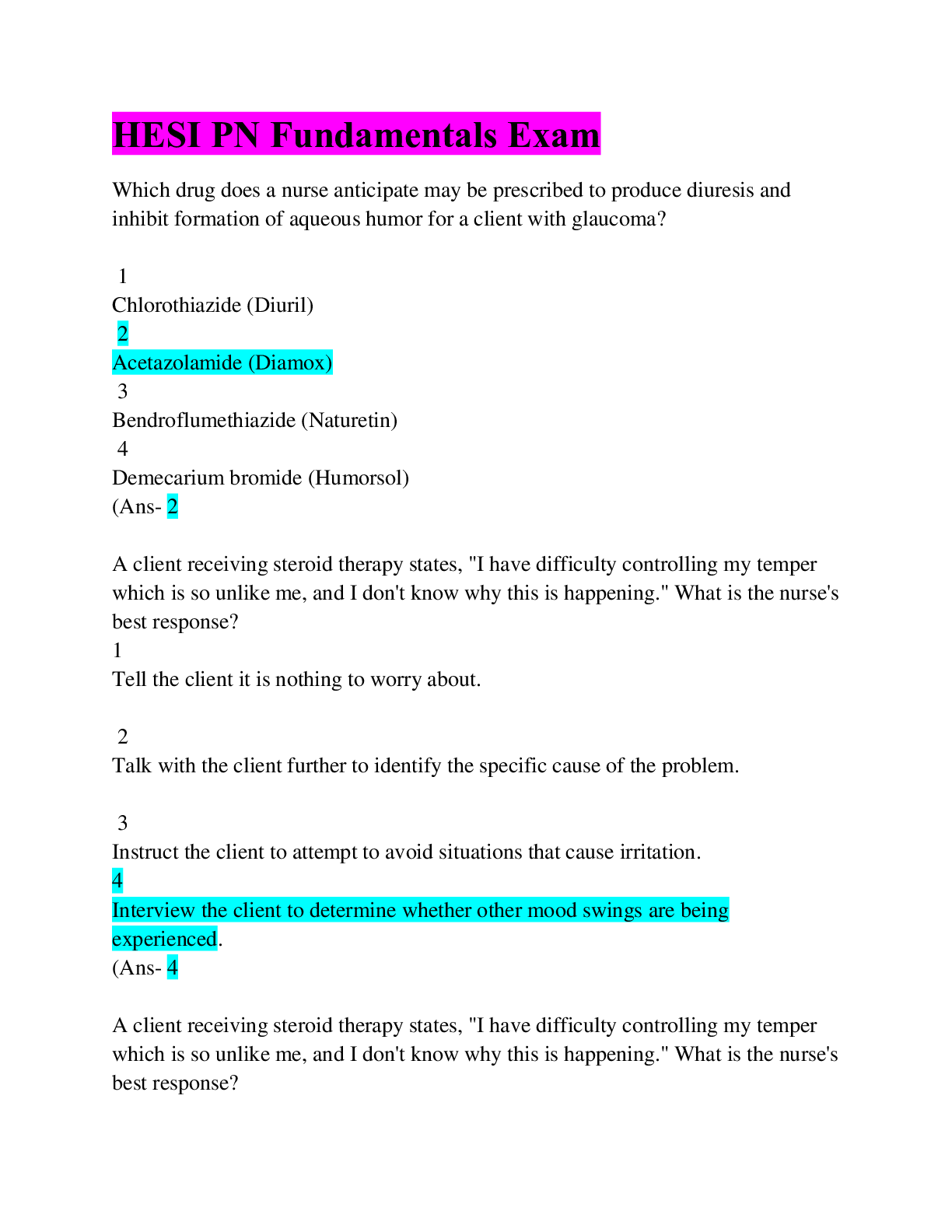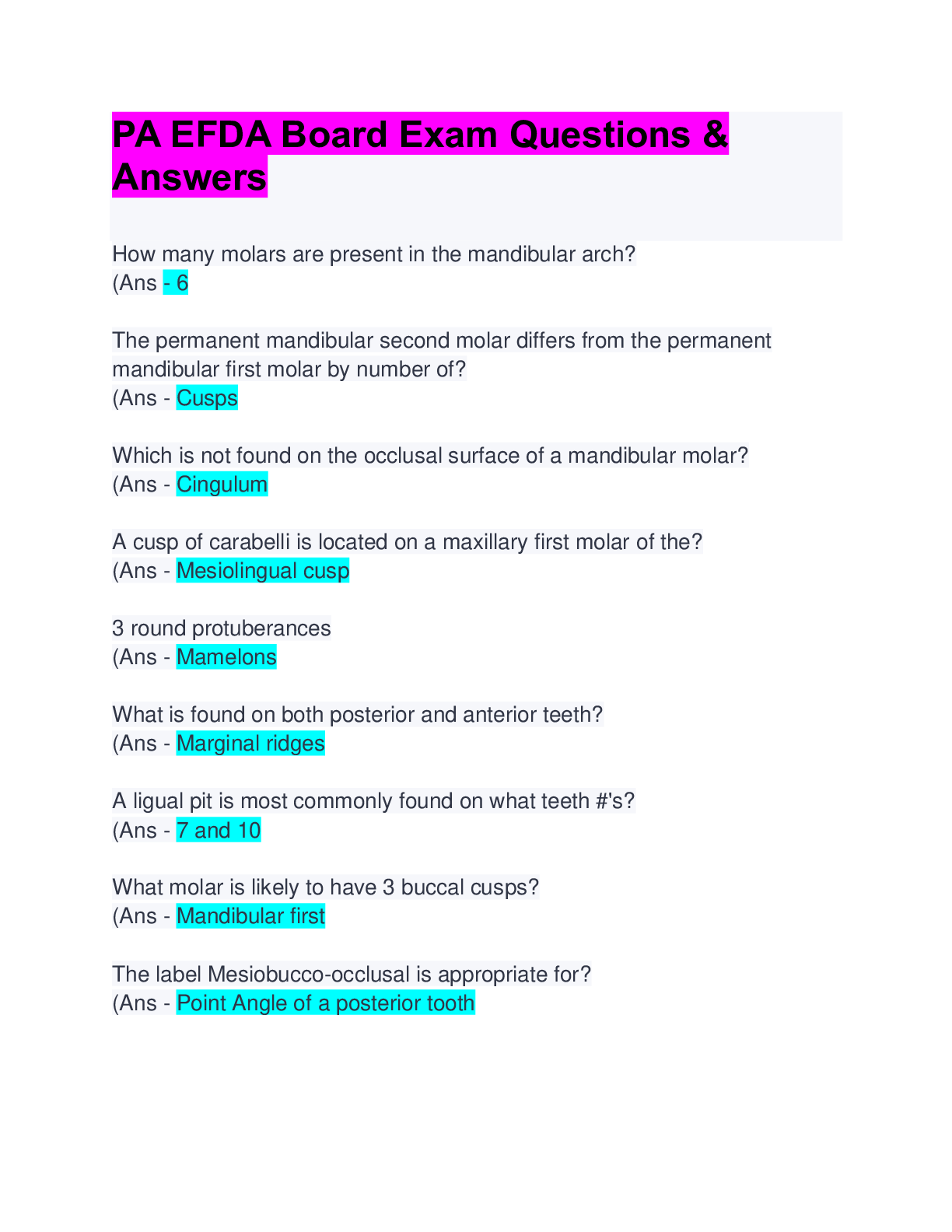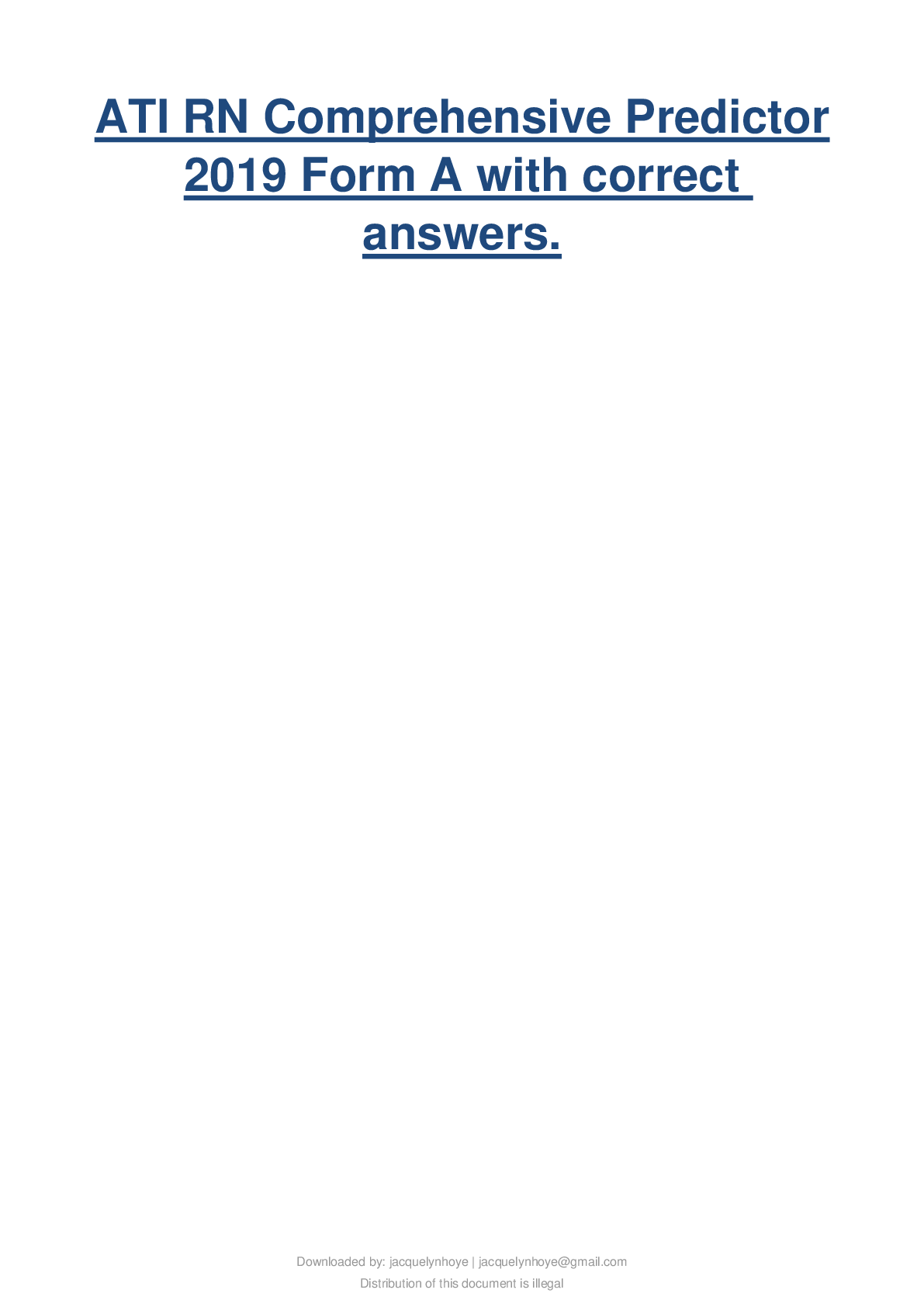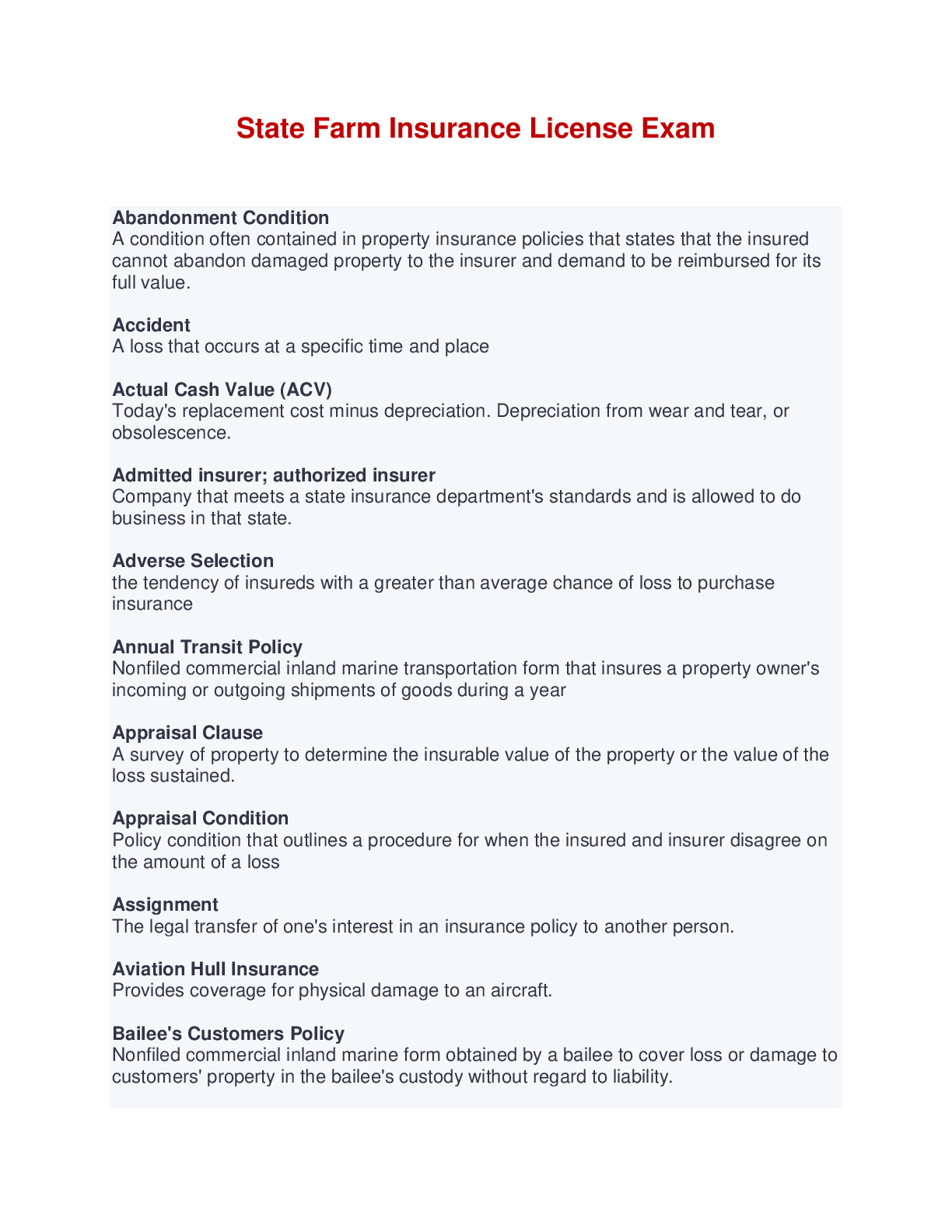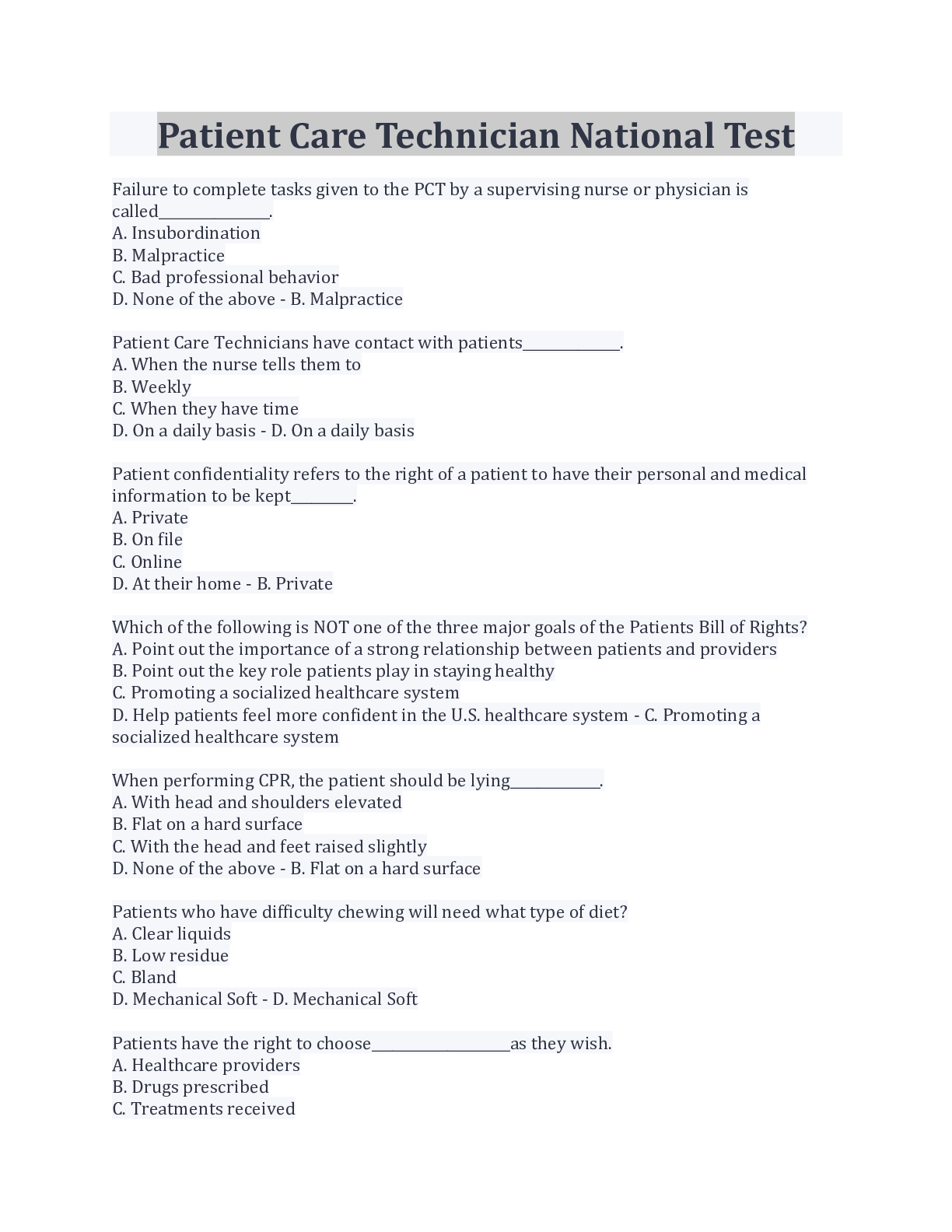Engineering > EXAM > ASE A4 Steering and Suspension Exam : Questions & Answers: Guaranteed A Plus (All)
ASE A4 Steering and Suspension Exam : Questions & Answers: Guaranteed A Plus
Document Content and Description Below
Which of the following is the correct way to adjust tapered roller bearings? A. Torque and the back off OEM specification B. Torque to OEM specification C. Adjust to a minimum of .150 " (3.80mm) en... d-play. D. Torque to 50 ft lbs. (Ans- Torque and then back off OEM specification. It is typical to torque the bearing while rotating the wheel and then back off the nut a certain amount. A vehicle has a crooked steering wheel when driving down the road. Technician A says this could be caused by failure to install the steering wheel correctly. Technician B says this could be caused by rear toe being out of adjustment. Who is correct? (Ans- Both Technicians are correct. Rear toe being out of proper adjustment will cause a thrust angle to exist which will cause crooked steering wheel. Also, a steering wheel which was installed one spline off could cause a crooked steering wheel. When does a positive camber angle exist? A. When the top of the tire leans outward B. When the top of the tire leans inward C. When the upper ball joint is rearward of the lower ball joint as viewed from the side D. When the rear axle is crooked (Ans- When the top of the tire leans outward. The top of the tire leans out with positive camber. Why is the camber angle important? A. Because it directly affects ride stiffness B. Because it is a tire wearing angle and it affects steering control C. Because it can cause vibration D. Because it affects the operation of the brakes (Ans- Because it is a tire wearing angle and it affects steering control. Camber is a tire wear angle and can cause a pull in the steering. The caster angle on the left front wheel has been set at 1 degree negative. The right front caster angle has been set at 1 degree positive. What would be the most likely result? A. The car would pull to the right B. The car would pull to the left C. The car would travel straight ahead D. The left tire would show second rib wear (Ans- The car would pull to the left. A car will usually pull to the most negative caster setting. Technician A says that camber and SAI make up the included angle. Technician B says that the purpose of the turning angle is to reduce tire scuffing during cornering. Who is right? (Ans- Both A and B. Both Technicians are correct. Included angle is found by combining camber and SAI. The purpose of the turn angle is to allow the front tires to travel through a turn in different circles. Tire scuffing during cornering is controlled by toe-out-on-turns or turning angle. Technician A says that shims are sometimes used to adjust rear toe and camber. Technician B says that strut rods are sometimes used to adjust rear toe and camber. Who is right? (Ans- Both A and B. Both Technicians are correct. Shims can be installed behind the bearing assembly to change the rear toe. Strut rods can also be used to change rear toe on some models. When the rear of the rear tires are closer together than at the front, the tires have: (Ans- Toe-out. Toe-out has the front of the tires farther apart than the rear. The jounce bumpers on the rear of a vehicle are severely worn. Which of the following is the LEAST LIKELY cause? A. Worn rear springs B. Excessive care in the trunk C. Worn front springs D. Worn rear shocks (Ans- Worn front springs are the least likely cause of worn rear jounce bumpers. A customer has a noise concern coming from the rear of the vehicle. Any of these could be the cause EXCEPT: A. Worn rear wheel bearings B. Rear tires out of balance C. Missing spring separators D. Worn Spring eye bushings (Ans- Rear tires out of balance would cause a vibration but not a noise. Which of the following is true concerning torsion bar front suspension. A. Torsion bars must always be replaced in pairs. B. Torsion bars are non-adjustable. C. When torsion bars are reinstalled, they can be installed in either side. D. Torsion bars can be used on SLA suspensions. (Ans- SLA suspensions often use torsion bars instead of coil springs. Which of the following could cause poor returnability? A. Thrust angle B. Toe-out-on-turns C. Tire pressure D. Power steering pump pressure (Ans- Low tire pressure will cause poor returnability and is a common problem. Which of the following alignment angles is most likely to be the cause of a steering returnability concern. A. Front toe B. Caster C. Camber D. Rear toe (Ans- Caster has the greatest affect on returnability. [Show More]
Last updated: 8 months ago
Preview 5 out of 63 pages

Loading document previews ...
Buy this document to get the full access instantly
Instant Download Access after purchase
Buy NowInstant download
We Accept:

Reviews( 0 )
$8.00
Can't find what you want? Try our AI powered Search
Document information
Connected school, study & course
About the document
Uploaded On
Oct 10, 2024
Number of pages
63
Written in
Additional information
This document has been written for:
Uploaded
Oct 10, 2024
Downloads
0
Views
19


